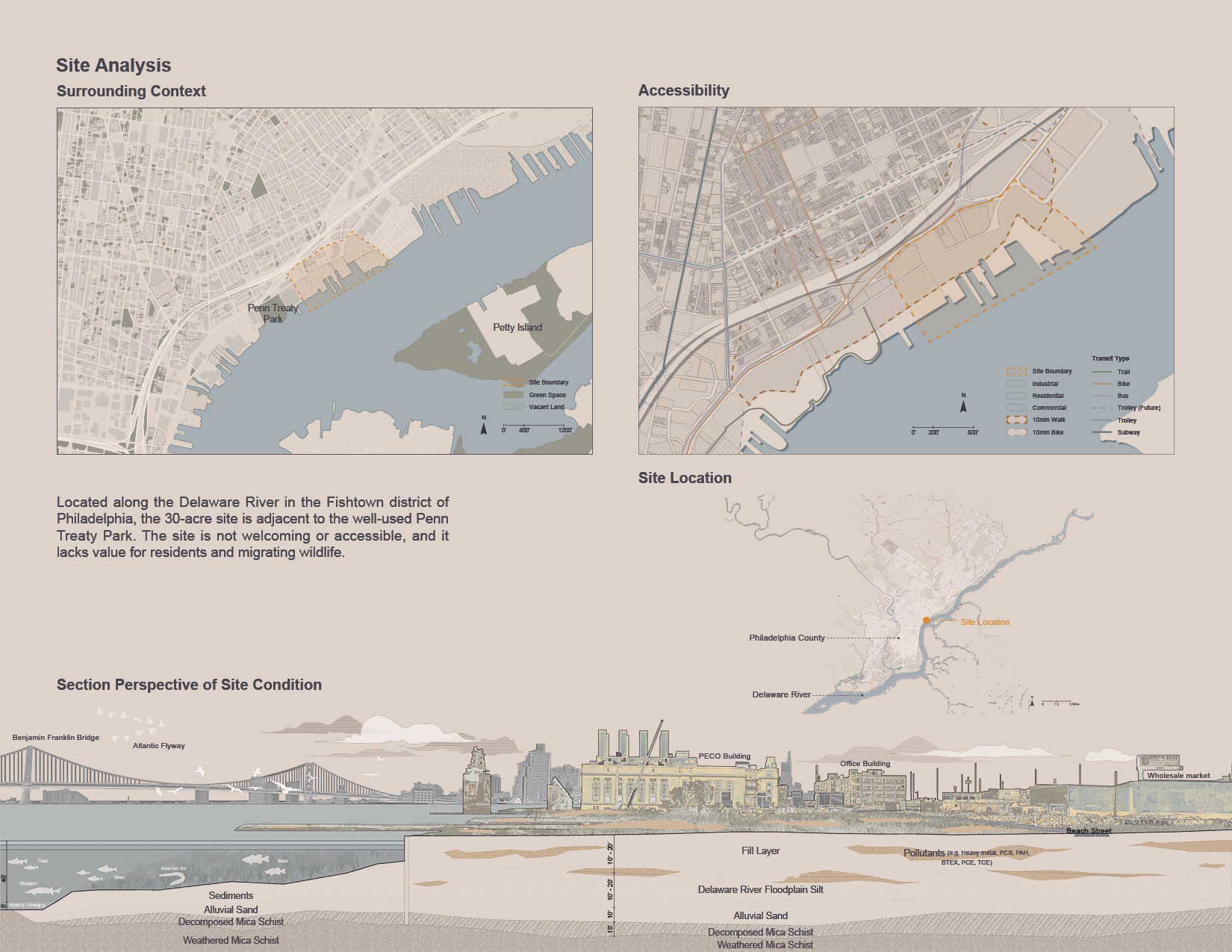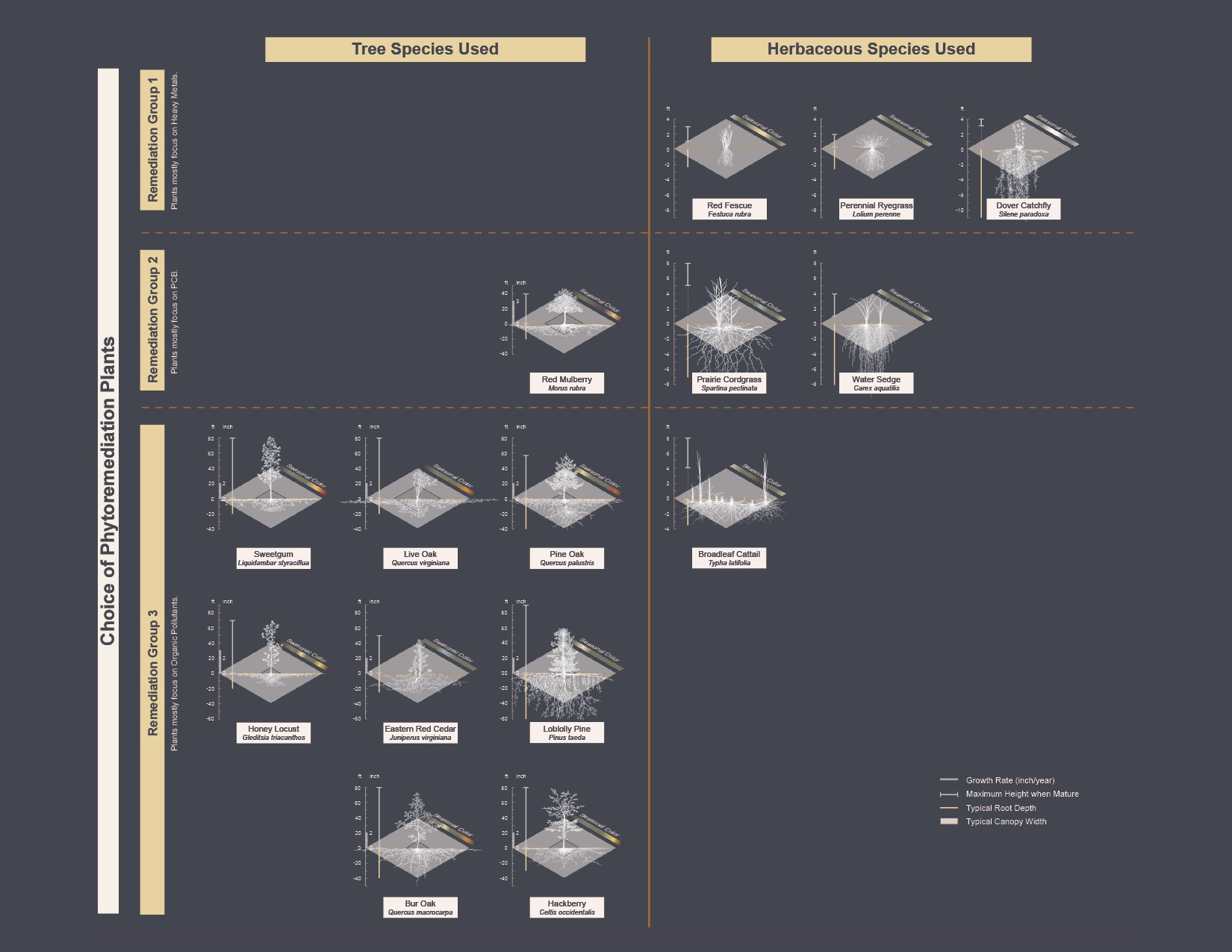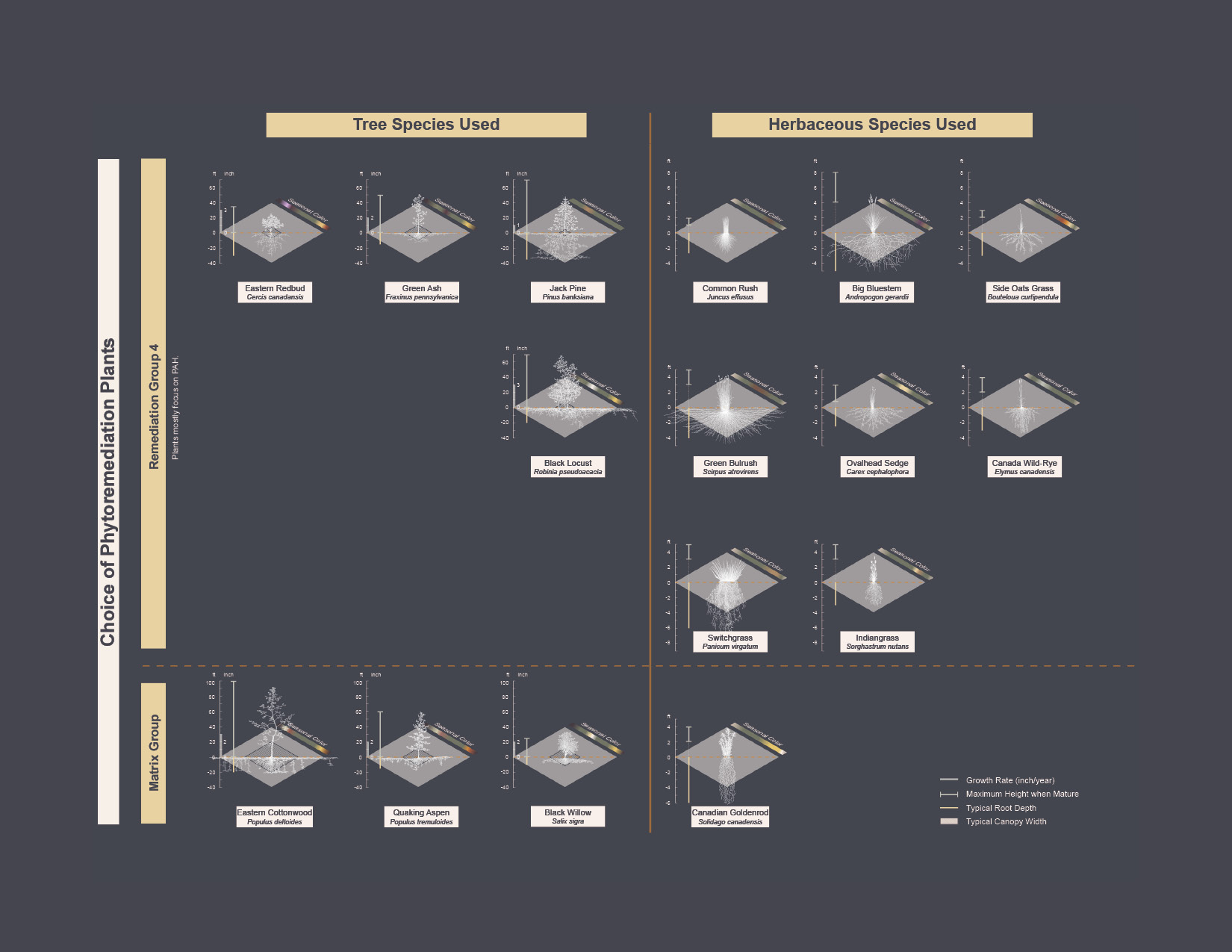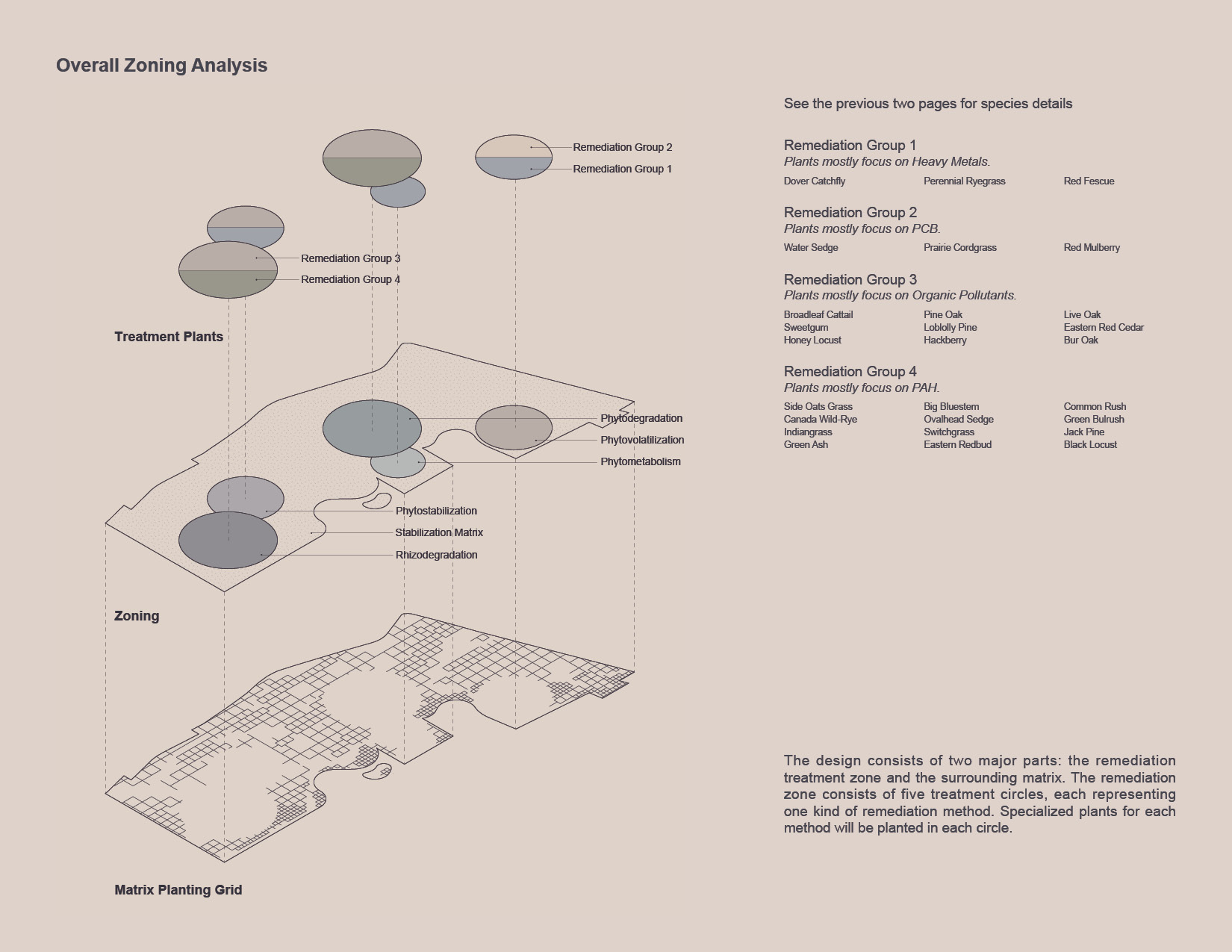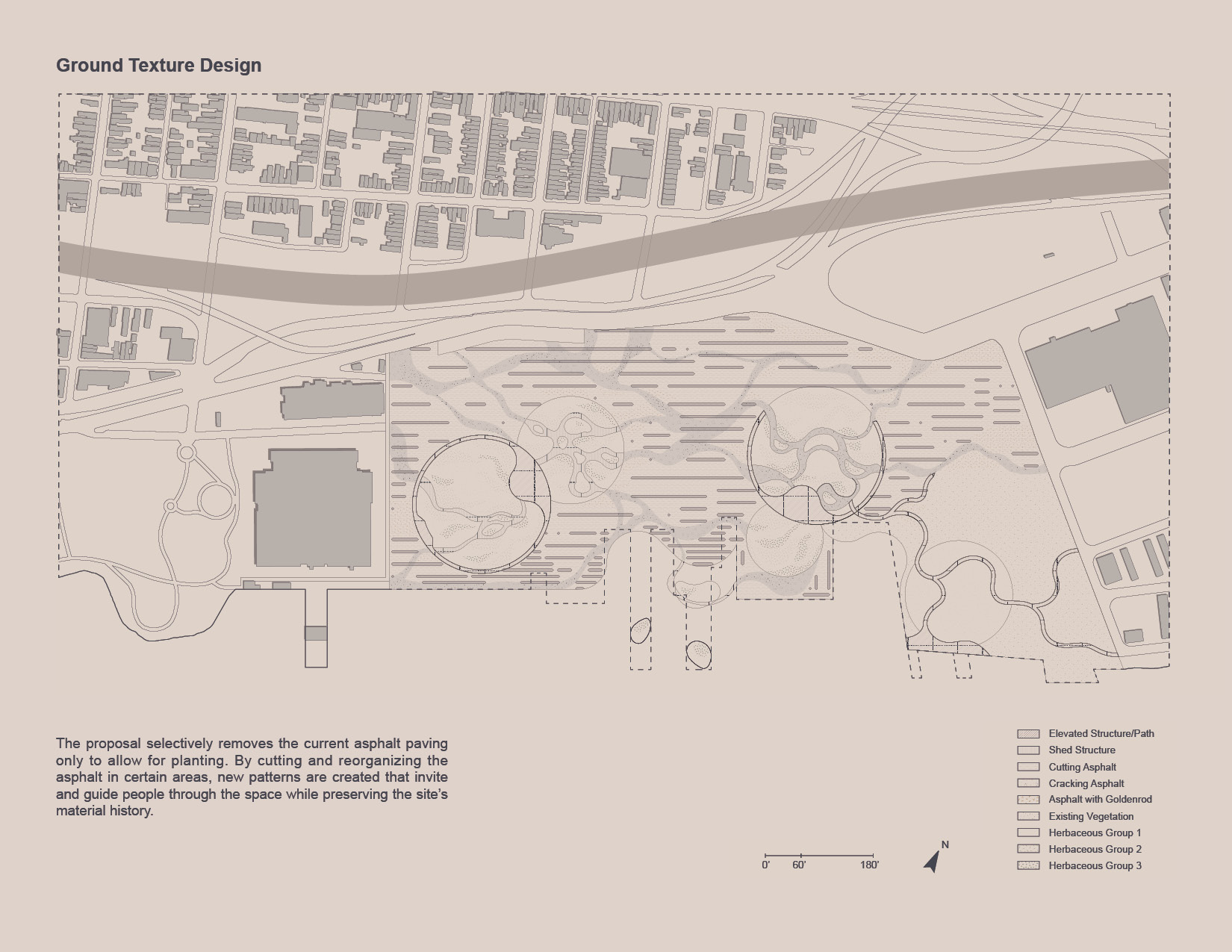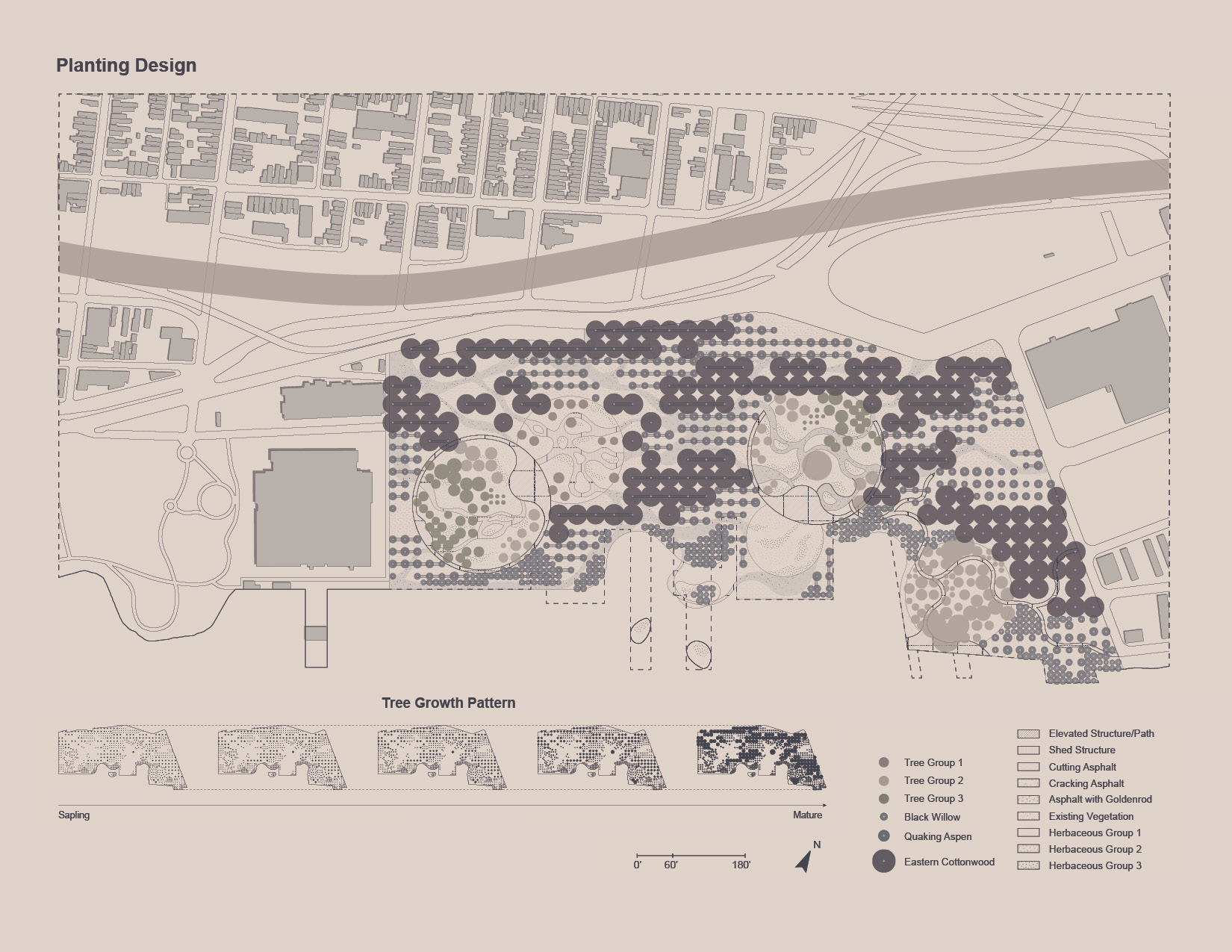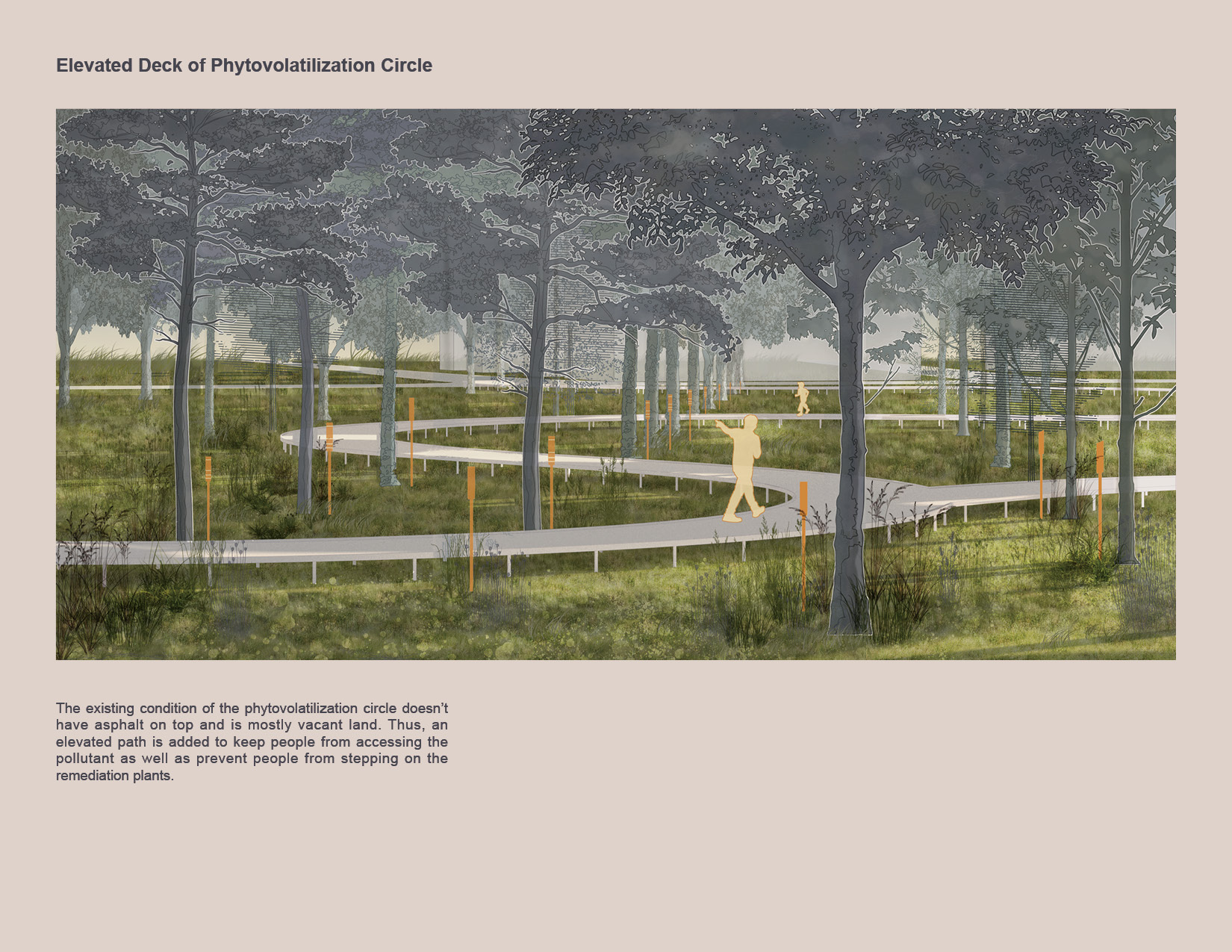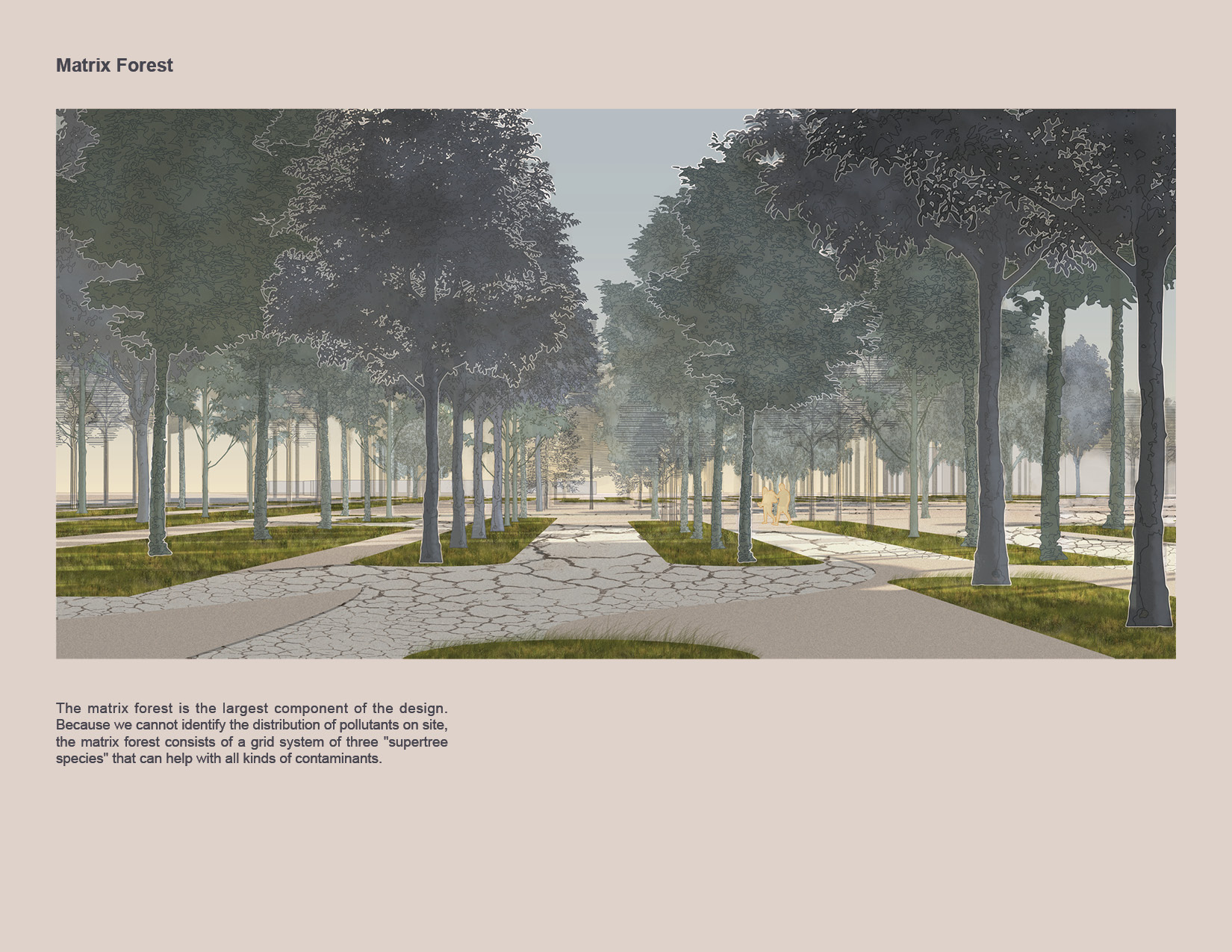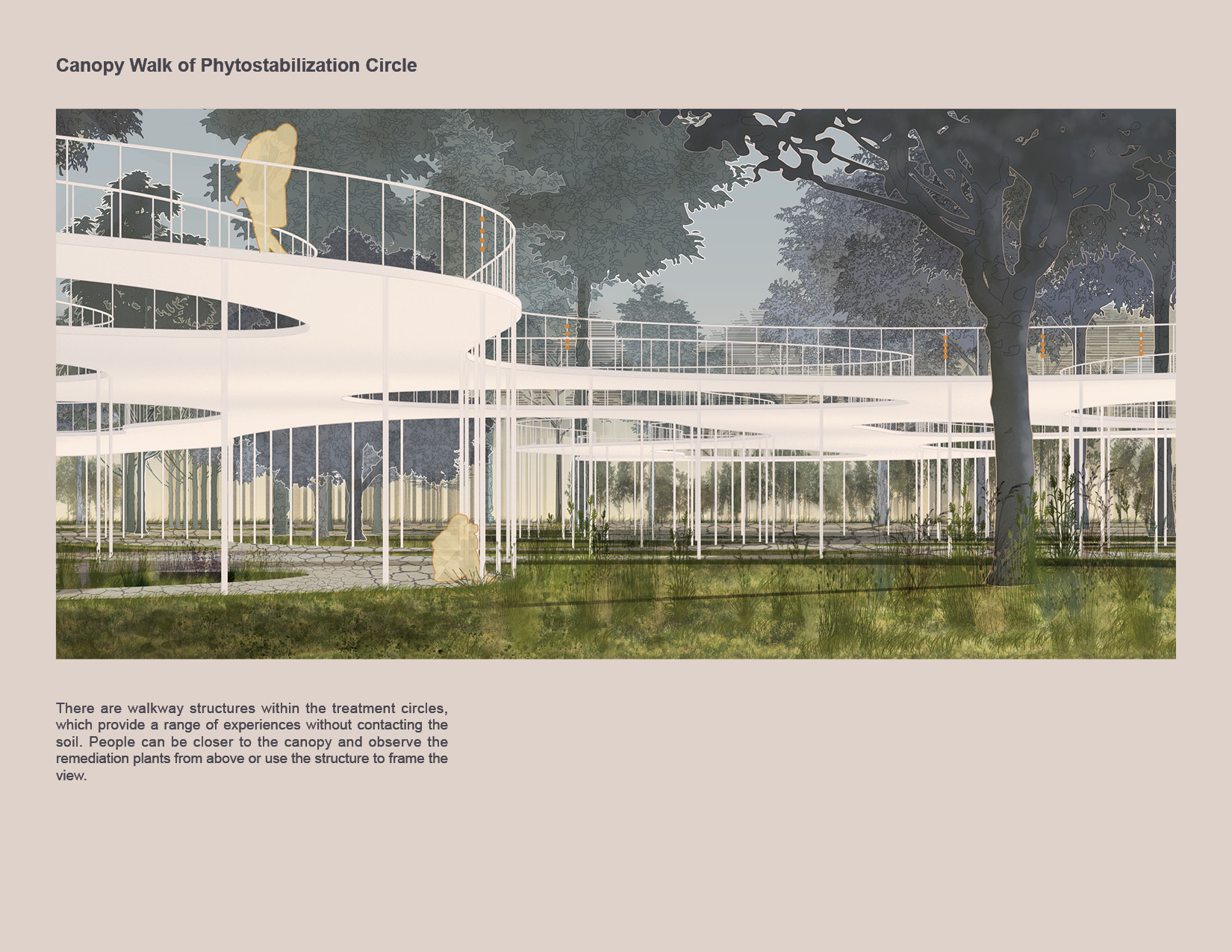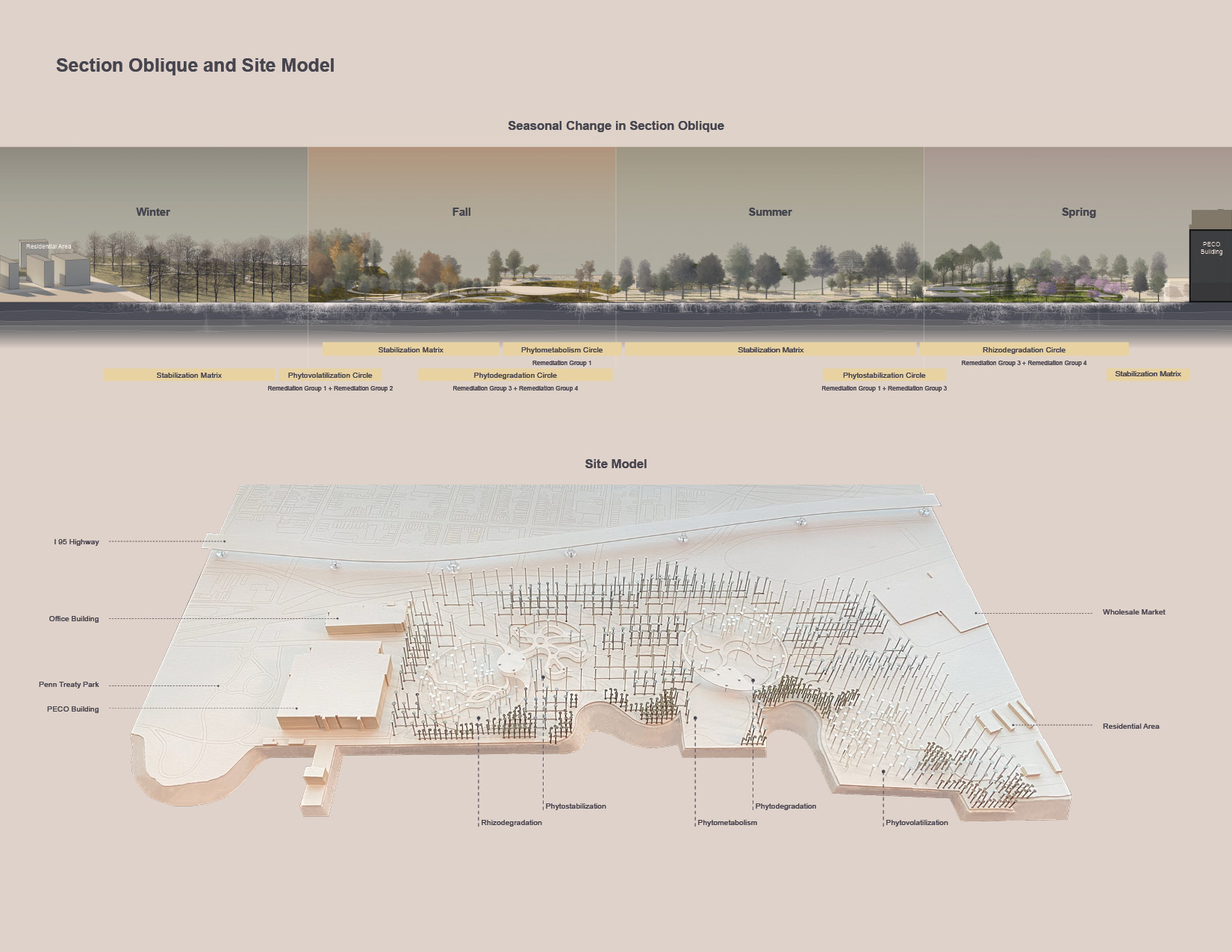Planting for the Future: Post-Industrial Delaware River Waterfront
- Time: 2023.01 - 2023.05, Academic work
- Collaboration: Individual Work
- Instructor: Karen M'Closkey
- Location: Philadelphia, Pennsylvania
- Medium: ArcGIS Pro, Grasshopper, Rhino, Adobe Suite, Laser Cut
- Award: PA-DE 2024 ASLA Student Award General Design Category: Honor Award, World Landscape Architecture 2023 Student Awards Conceptual Large Design Category: Shortlisted
Project description
Located along the Delaware River in the Fishtown district of Philadelphia, the 30-acre site has a long industrial history, serving as a port beginning in the 1800s and as the location for the PECO Delaware Station Plant, a coal-fired plant that generated electricity from 1917-2004. It is adjacent to Penn Treaty Park, one of the only places in the city with access to the Delaware River. As with any formerly industrial site, the soils are highly contaminated, the site is not welcoming or accessible to the local community, and it lacks value for resident and migrating wildlife.
This proposal reimages the site as a practice ground for removing the six major pollutants (TCE, PCE, BTEX, PAH, PCB, and heavy metals) using phytoremediation methods. In order to have fewer interruptions to the ecosystem, the design utilizes the methods (phytovolatilization, phytodegradation, rhizodegradation, phytometabolism, and phytostabilization) that will not draw pollutants into the food web.
The design consists of two major parts: the remediation zone and the surrounding “matrix.” The choice of a circle is to call attention to the five key remediation areas, each representing one type of remediation method. These circles act as the primary location for education: visitors can get to know the functioning plants and phytoremediation methods. Plants are divided into groups based on their specialty in certain contaminants and are planted by the remediation mechanism of each circle. There are multiple walkway structures within the treatment circles, which provide a range of experiences without coming in contact with the soil. When people are on the structures, they can be closer to the canopy and observe the remediation plants from above. When people are on ground level, they can use the structure to frame their view while moving through the space. Additionally, there are remediation indicators along the path to help people feel the invisible remediation process through the growth of the plants.
The other part of the design is the matrix, which is a way to treat the soils when the exact location of contaminants is unknown. The matrix consists of the three "super tree species" that can neutralize or stabilize many kinds of contaminants on site.
Because the site is heavily polluted, the proposal selectively removes the existing asphalt paving only to allow for planting; thus, the entire matrix is an area for wandering, with no clearly delineated paths. By cutting and reorganizing the asphalt in certain areas, new patterns are created that invite and guide people through the space while preserving the site's material history.
The design of the site is organized using multiple layers of patterns based on various grid spacings. The trees, undergrowth, and ground type each follow their own organization, which, when overlaid, intertwine to create a diversity of experiences for people who want to observe and learn about the process of phytoremediation.
